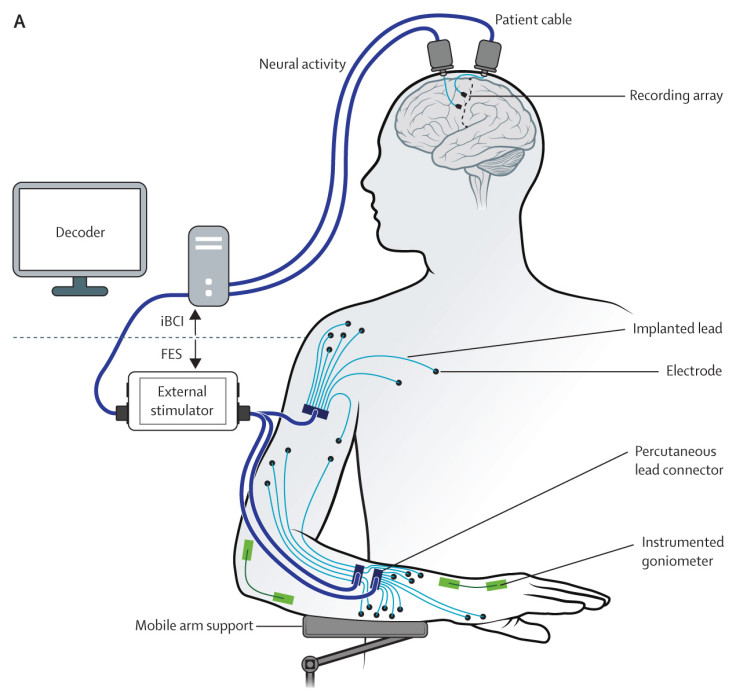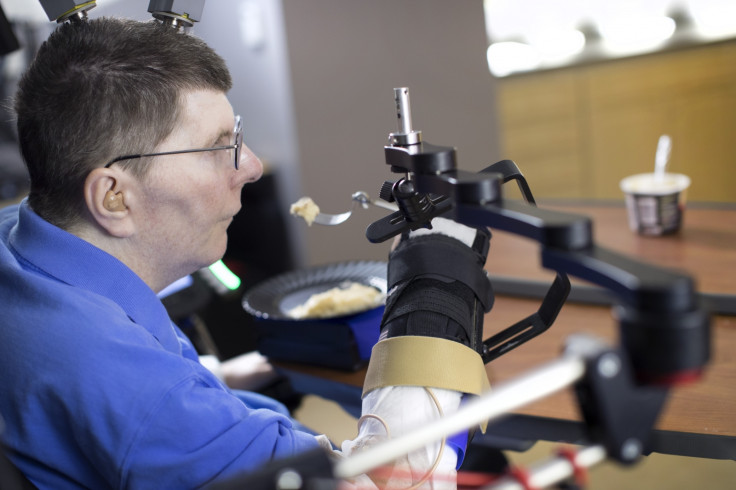Man paralysed from neck down regains arm movement with innovative brain prosthesis
The patient was able to move his right arm to feed himself for the first time in eight years.
A quadriplegic man who hadn't moved his right arm for the past eight years has regained some movement, after being fitted with a novel neuro-prosthesis which reconnected his brain with his muscles. Bill Kochevar, paralysed from the neck down following a bicycle accident was able to feed himself and to drink on his own, thanks to the innovative technology.
People with suffer from chronic tetraplegia after sustaining a high-cervical spinal cord injury are unable to perform the reaching and grasping movements required for many daily life activities.
A technology known as functional electrical stimulation (FES) has previously been tested in patients with mid-level to low-level cervical spinal cord injuries (with less severe paralysis than patients like Kochevar).
This experimental technique works by sending small electrical charges to muscle and nerves to stimulate them, and it has allowed people to regain limb movement in some cases.
In a study published in the Lancet, scientists show for the first time that it is possible to use an implanted neuro-prosthesis and FES to restore both reaching and grasping in a person like Bill Kochevar, who suffers from chronic spinal cord injury that results in complete loss of arm and hand function.
Electrodes in the muscles and sensors in the brain
The 53 year-old patient underwent surgery to have the neuro-prosthesis fitted. This involved brain surgery to place sensors in the motor cortex area of his brain, an area responsible for hand movement. The scientists thus created a brain-computer interface, which was able to analyse Kochevar's brain signals and to recognise which movements he was thinking about at a given time.
The participant then underwent another procedure which involved implanting the FES system - 36 muscle-stimulating electrodes into his upper and lower right arm. These electrodes sent electric signals the muscles for eight hours a week over 18 weeks, improving strength and movement as well as reducing muscle fatigue.

The last step of this pilot trial was to connect the brain-computer interface with the electrodes in Kochevar's arm. After that, the electrodes were able to stimulate the muscles to produce contractions, at the same time as the interface recognised when he was thinking about moving his arm.
The electric stimulation helped the patient intuitively complete the movements he was thinking of and twelve months on, he was able to move his arm to complete day-to-day tasks, including drinking a cup of coffee and feeding himself.
The system also involved an arm support to stop gravity simply pulling his arm down.

Although only tested with one participant, this experimental neuro-prosthesis is a major advance, the first to restore brain-controlled reaching and grasping in an individual with complete paralysis from the neck down.
Leigh Hochberg, the lead scientist on this project commented: "It's been so inspiring to watch Mr. Kochevar move his own arm and hand just by thinking about it. As an extraordinary participant in this research, he's teaching us how to design a new generation of neuro-technologies that we all hope will one day restore mobility and independence for people with paralysis."
© Copyright IBTimes 2025. All rights reserved.






















